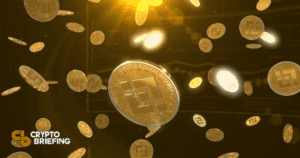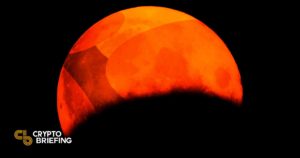Key Takeaways
- Luna Classic is planning to implement a new 1.2% transaction tax burn mechanism.
- The failed project’s native coin, LUNC, has risen 171% on the week.
- However, new investors should temper their expectations of the coin eventually hitting a dollar.
The Terra Classic community is planning to start burning more LUNC—but traders should be careful they don’t get burned themselves.
Terra Classic’s Revival
Terra Classic is attempting to make another run at relevance, thanks to support from its community.
When the UST stablecoin collapsed in May, many thought there was no hope left for Terra. Do Kwon, Terraform Labs’ infamous CEO, had quickly moved to establish a new Terra blockchain, relegating his failure to the name “Luna Classic” and rebranding the new chain’s native coin under the LUNA ticker.
However, since Terra’s untimely collapse, efforts to revive the original blockchain have progressed slowly. In June, a proposal to start burning a portion of the Terra Classic transaction fees and increase validator rewards showed that there was still motivation to develop the chain despite it being abandoned by Terraform Labs. Another proposal to start burning 1.2% of all tokens transacted also passed a community vote, though details on how such an idea could be implemented were absent.
All the while, LUNC, Terra Classic’s native coin, continued trading. Volatility was high but not wholly unexpected given its low level of liquidity. The few active developers in the Terra Classic ecosystem was enough to fuel speculation. As is often the case with crypto tokens that trade at a fraction of a cent, hope kicked in for LUNC to one day trade at a single penny or, for the more ambitious (read: deluded), a dollar. Such a move would put LUNC market capitalization in the trillions, a fact that its biggest shills refused to acknowledge.
Fast forward to today, and a recent proposal from Terra community member Edward Kim has helped reignite enthusiasm for Terra Classic. Kim’s proposal puts forward an actionable path toward implementing the 1.2% burn tax on all on-chain transactions. In his post on the Terra Classic forums, he explains the possible pros and cons of such an update and invites discussion from other community members. In response, LUNC has hit a new local peak, trading at its highest since the May collapse.
But what exactly does burning and taxing Luna Classic transactions hope to achieve? How will the community be able to enforce the tax on centralized exchanges? These are just a couple of the questions the Terra Classic community needs to address in the lead-up to an event that could spark a significant amount of volatility.
Burn Tokens, Get Money?
Burning tokens is a straightforward concept to understand. When the supply of something is reduced, but the demand stays the same, it follows that the price people are willing to pay will increase. It’s no coincidence that many of the most popular and widely adopted crypto projects incorporate a burn mechanic into their tokenomics. Shiba Inu’s developers routinely burn chunks of its supply, and Binance’s BNB also conducts quarterly token burns, much to the applause of holders.
However, in many cases, burning tokens does little to impact actual supply and demand metrics. In the case of BNB, almost all of what’s burned comes from a reserve of tokens the exchange has held since launch. It makes for a good headline when Binance touts it has burned millions of dollars worth of BNB, but in reality, those tokens were never in circulation. It’s not surprising, then, that such events have historically failed to impact BNB’s price.
What token burns do accomplish, though, is creating a strong narrative that even the most novice crypto investor can understand and get behind. It matters not whether a burn mechanism will significantly shrink a token’s supply and push prices up. By hyping up a token burn enough, the price will often rise anyway because people buy in anticipation of a perceived reduction in supply.
For Luna Classic, its planned token burn tax will likely do nothing more than create an excellent narrative to draw in naïve investors. The vast majority of LUNC trading occurs off-chain on centralized exchanges such as Binance, Kucoin, and Gate.io. That means even if the Terra Classic community successfully implemented a 1.2% burn tax on transactions, only a tiny fraction of LUNC would end up burned. While many members of the LUNC community have petitioned exchanges like Binance to implement their burn tax, it looks extremely unlikely that any will.
It’s also worth noting that since Terra Classic re-enabled staking earlier this year, large holders and validators have been taking advantage of its outsized staking rewards. Because few people have bothered delegating their LUNC to validators since the chain’s collapse, rewards are split between fewer people, resulting in an average annualized return of over 37%. These early stakers now have fully-loaded bags ready to dump on new investors who are convinced Luna Classic’s upcoming token burn will shrink the supply and send it to a dollar.
Ultimately, Luna Classic has little fundamental reason to be valued as highly as it is, even at fractions of a cent. There’s no reason for serious developers to start building on the chain, and those currently involved seem to view it more as a hobby than a serious investment. Of course, this doesn’t mean LUNC can’t go parabolic again, but it can just as easily plummet when those pumping up the price decide to jump ship. For the gamblers out there, be warned: don’t get caught holding the bag when the music stops. And it will stop.
Disclosure: At the time of writing this piece, the author owned ETH, and several other cryptocurrencies.
The information on or accessed through this website is obtained from independent sources we believe to be accurate and reliable, but Decentral Media, Inc. makes no representation or warranty as to the timeliness, completeness, or accuracy of any information on or accessed through this website. Decentral Media, Inc. is not an investment advisor. We do not give personalized investment advice or other financial advice. The information on this website is subject to change without notice. Some or all of the information on this website may become outdated, or it may be or become incomplete or inaccurate. We may, but are not obligated to, update any outdated, incomplete, or inaccurate information.
You should never make an investment decision on an ICO, IEO, or other investment based on the information on this website, and you should never interpret or otherwise rely on any of the information on this website as investment advice. We strongly recommend that you consult a licensed investment advisor or other qualified financial professional if you are seeking investment advice on an ICO, IEO, or other investment. We do not accept compensation in any form for analyzing or reporting on any ICO, IEO, cryptocurrency, currency, tokenized sales, securities, or commodities.
Binance’s BNB Chain Burns Another $772M in Tokens
BNB Chain, formerly known as Binance Smart Chain, has completed its quarterly auto-burn event for Q1, 2022, taking roughly $772 million worth of BNB tokens out of circulation. BNB Chain Burns…

Terra Goes Live With New Blockchain and LUNA Airdrop
The blockchain went live with an airdrop of new LUNA tokens earlier this morning. Terra Attempts Revival The new Terra blockchain is live. Terraform Labs took to Twitter today to…

A Week of Terra: the Story of Do Kwon and His Black Swan Wipeout
Terra’s implosion will be remembered as one of the biggest moments in crypto history. Chris Williams tells the story of the blockchain and its controversial leader, Do Kwon. Buying the…


No Comments Yet